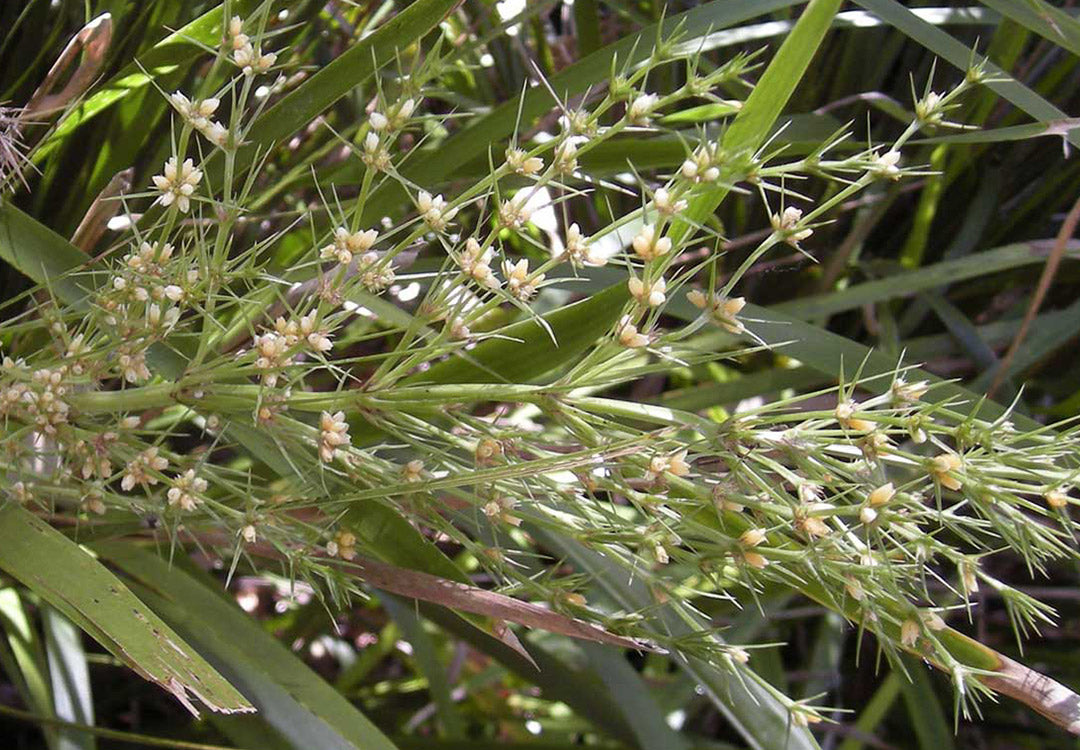
The Lomandra genus is a clade within the asparagus family Asparagaceae filled with Aussie native plants that are commonly called “strappies”.
A few varieties are widely planted throughout Australia because they are drought-resistant, and pretty difficult to kill.
They’re often planted in the wrong spot. They really do look best when they’re allowed to go strappy; if you’ve planted them along a driveway and keep them pruned back off the concrete edge, take a step back and look again. It doesn’t really look good, does it?
Hedging or shearing them in a dome is the usual way to prune them and can be done anywhere between once every 6 months to 2 years. Pruning in this way rejuvenates the lomandra’s aesthetic appeal because it gets rid of damaged/dead leaves and forces the plant to produce fresh new ones.
Description
These plants are herbacious “grassy” or shrubby monocots with strappy leaves and parallel leaf venation. They might be considered “shrubby” though they lack recognisable branches.
The stems are there, but the internodes are so small they’re all but non-existent. It’s easier to see a “branch” on an older plant that’s grown a fair bit.
Members of this family can be easily mistaken for Dietes spp in the iris family Irideae, especially if flowers are not present, which look absolutely nothing alike between the two different types.
There’s no shame if you get these two different plant types mixed up if there are no flowers present, but a neat little trick to tell the two apart is the way the leaves grow: lomandras are a little bit more floppy than dietes, which tend to be slightly more erect. It’s a subtle difference, and different lomandra species can differ on their floppiness.
There are also other strappy plants within the Asparagaceae family that they may also be mistaken with. Mondo grasses in the Ophiopogon genus within Asparagaceae can look quite similar, especially the larger varieties. To me, the leaves in this genus seem to be ever so slightly “juicier” than in Lomandra.
Flowers, Fruits & Leaves
Tepals: Sepals and petals look alike and may be free-standing or fused.
Reproductive: Diecious with separate male and female plants.
Fruit: May be a globous (spherical), trigonous (triangular) or cylindrical shaped dehiscent 3-parted capsule.
Seeds: Brown to orange or reddish brown and globose or ellipsoidal.
Leaves: Long, narrow, strappy, blade-like leaves arising from a seemingly stemless base.
Noteworthy Types
Lomandra hystrix is a larger type with broader, longer leaves and plentiful, conspicuous inflorescences that are quite prickly. This plant can be easily mistaken for a diete.

Lomandra hystrix, one of the most common varieties around. Notice the floppy leaves. Image source

Close up of a Lomandra hystrix inflorescence (unsure of sex). Image source
Lomandra longfolia is a slightly smaller variety that can have thinner leaves, depending on the variety.

Lomandra longfolia at Hillier Gardens in Hampshire, England. Image source
Lomandra confertifolia is an even tinner-leaved variety that’s often used to soften rock walls and line garden paths.

Lomandra confertifolia ssp. rubiginosa ‘Seascape’. Image source
Conclusion
Lomandras are one of the classic Aussie plant types that horticulturalists and landscapers love to use in gardens around the country. Though they are sometimes called “grasses”, lomandras really look nothing like a true grass once you get up close to them.
If you haven’t already read my articles on plant identification and scientific names, I recommend reading those to get a broader picture of the topic. Alternatively, you can browse some of my other plant families, subfamilies and genera below.
